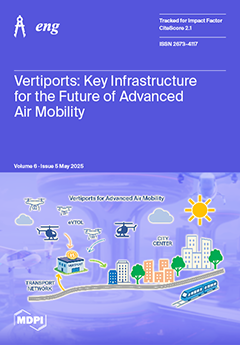Open AccessFeature PaperArticle
Biodiesel Stability Enhancement Through Catalytic Transfer Hydrogenation Using Glycerol as Hydrogen Donor
by
Graecia Lugito, Andreas Yulius Pamungkas, Muhammad Naufaal Daffa Realdi, Alif Kembara Alam, Candra Egiyawati, Yano Surya Pradana, Tri Partono Adhi, Tatang Hernas Soerawidjaja, I Gusti Bagus Ngurah Makertihartha, Wan Hanna Melini Wan Mohtar, Irwan Kurnia and Antonius Indarto
Cited by 3 | Viewed by 2650
Abstract
This research aimed to enhance biodiesel stability through catalytic transfer hydrogenation using a biomimetic bimetallic catalyst and glycerol as a hydrogen donor. The effects of catalyst species, intermediate solvent, glycerol feed, and glycerol form on biodiesel stability were investigated. In this study, the
[...] Read more.
This research aimed to enhance biodiesel stability through catalytic transfer hydrogenation using a biomimetic bimetallic catalyst and glycerol as a hydrogen donor. The effects of catalyst species, intermediate solvent, glycerol feed, and glycerol form on biodiesel stability were investigated. In this study, the examined bimetallic catalysts were Zn-Cr-bicarbonate, Zn-Cr-formate, Zn-Cr-Ni, and Cu-Ni/SiO
2. Based on the results, the most excellent catalyst was presented by Cu-Ni/SiO
2 catalyst with DMF solvent and 10 wt% glycerol feed. This combination demonstrated a significant reduction in iodine (ΔIV = −4.9 g-I
2/100 g) and peroxide values (ΔPV = −5.2 meq-O
2/kg) accompanied by an elevation of oxidative stability (ΔOS = 4.3 h). Moreover, the reaction of catalytic transfer hydrogenation using these bimetallic catalysts followed the theoretical mechanism of the simultaneous dehydrogenation–hydrogenation process with two different metals. The promotion of bicarbonate and formate ions on the bimetallic catalyst provided hydrogen transfer assistance in the catalyst. Hence, the continuous improvement of biodiesel properties is expected to promote sustainable implementation of cleaner diesel fuel.
Full article
►▼
Show Figures





